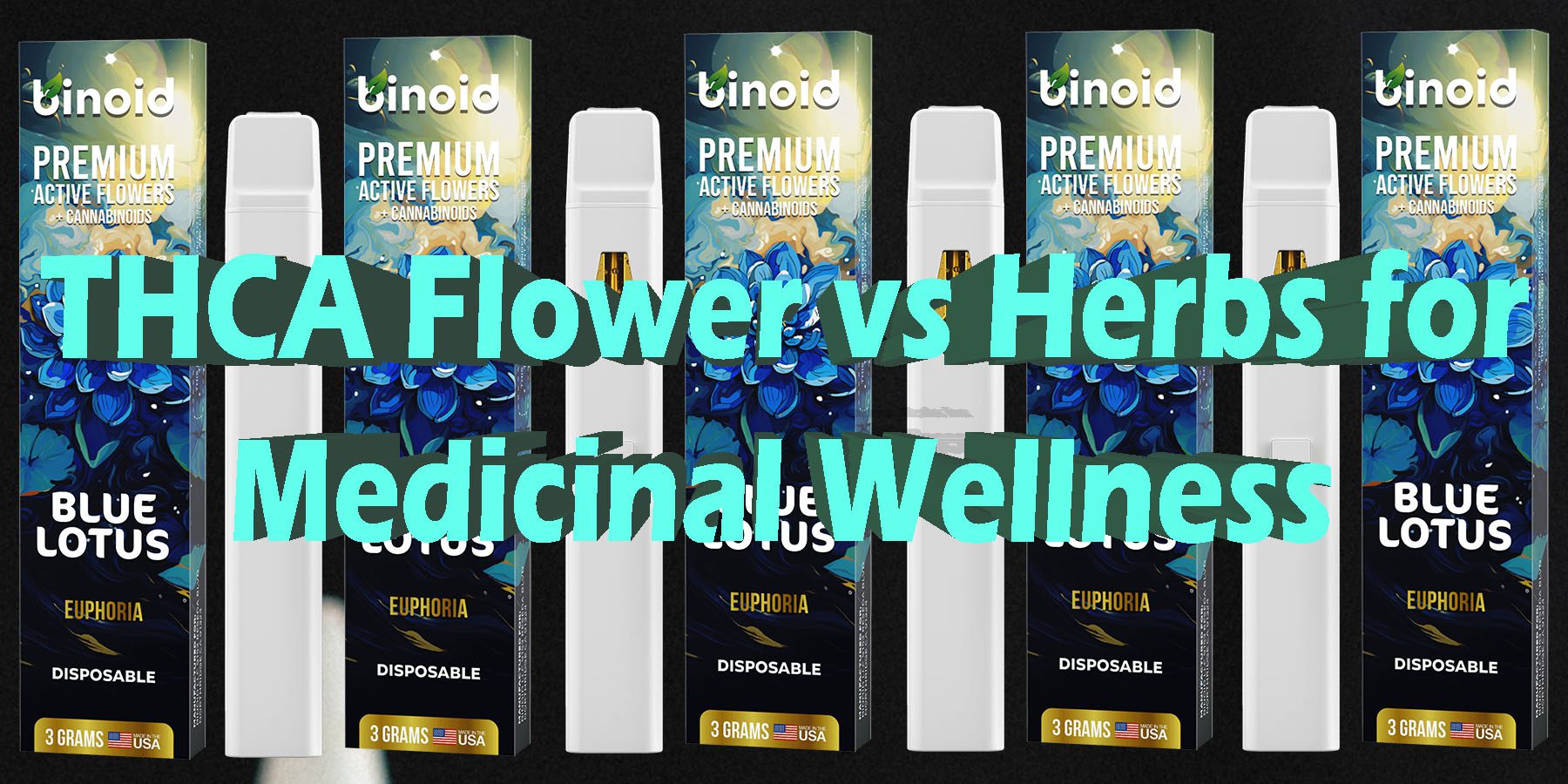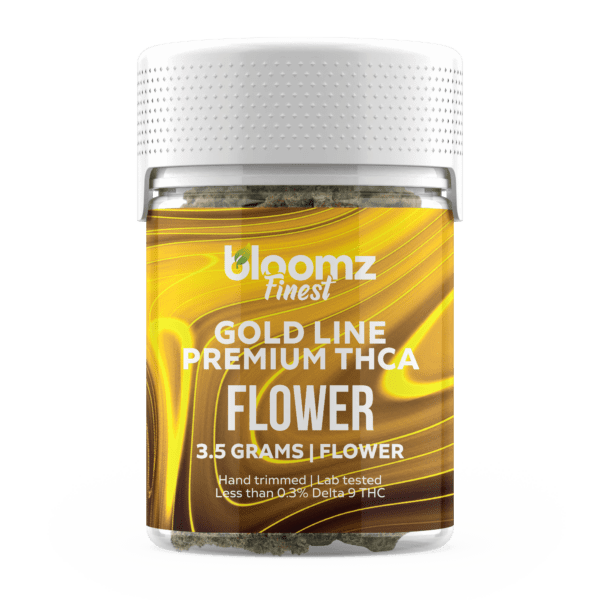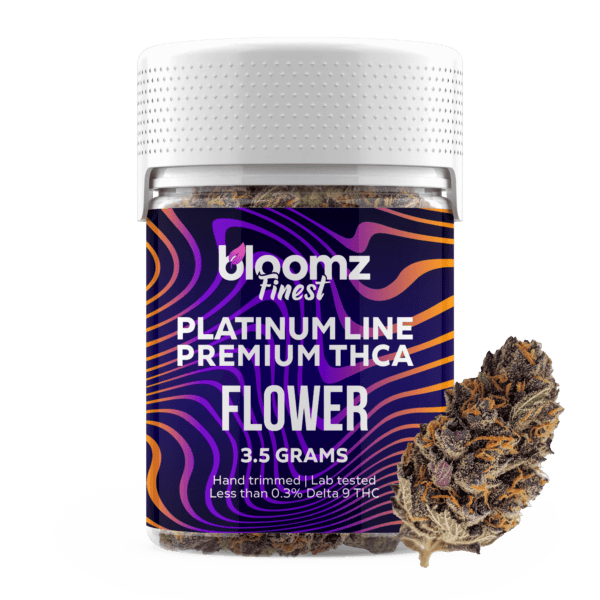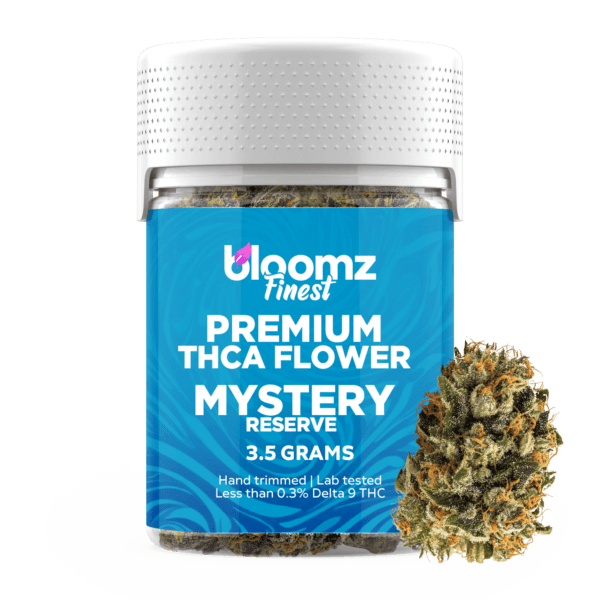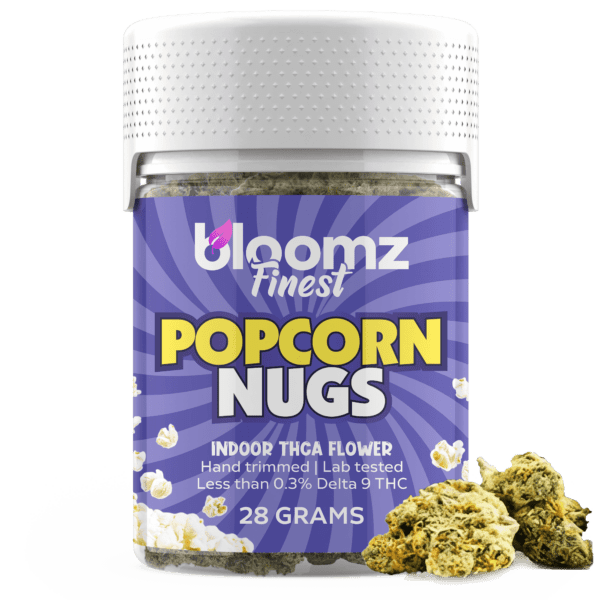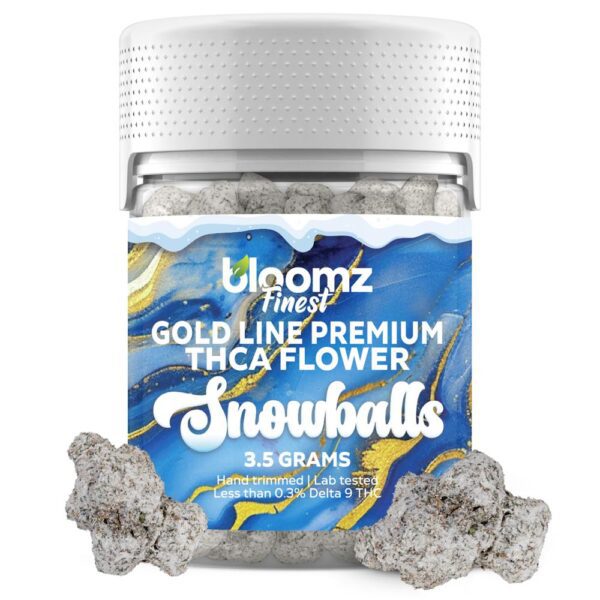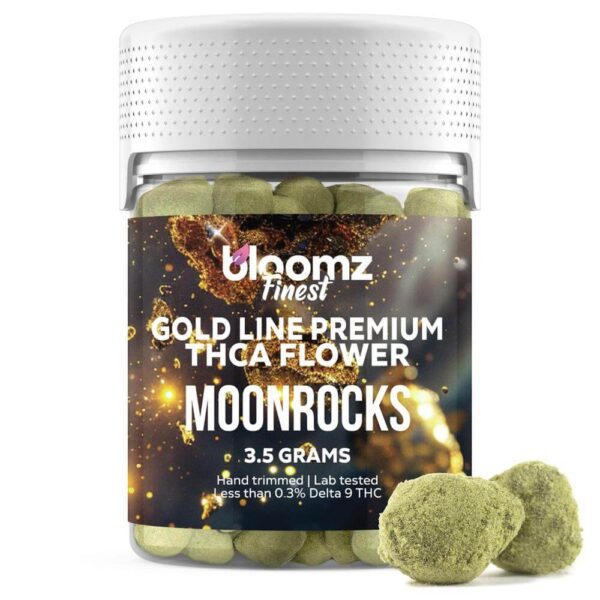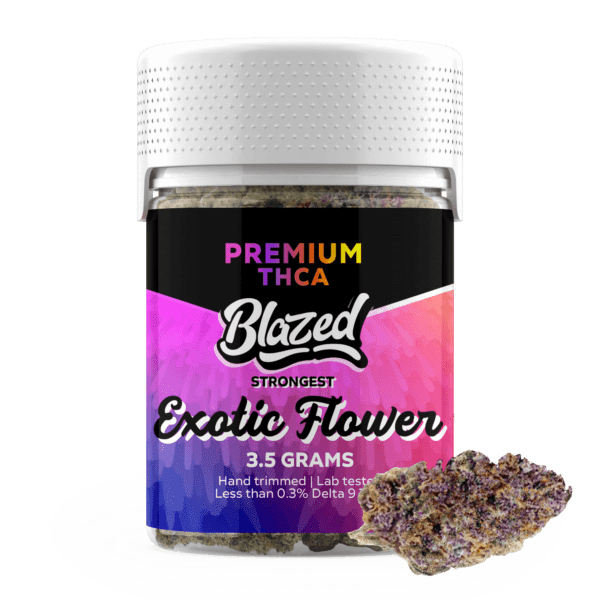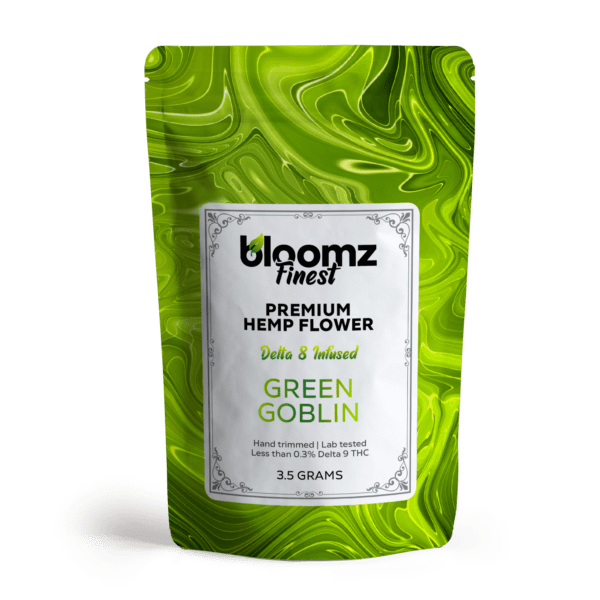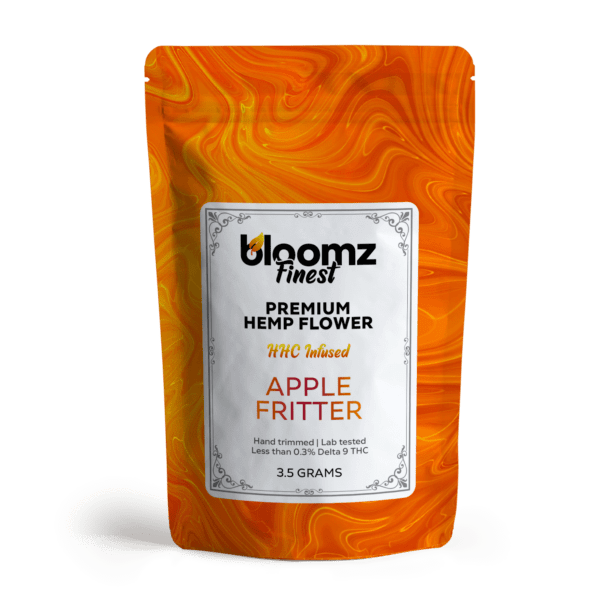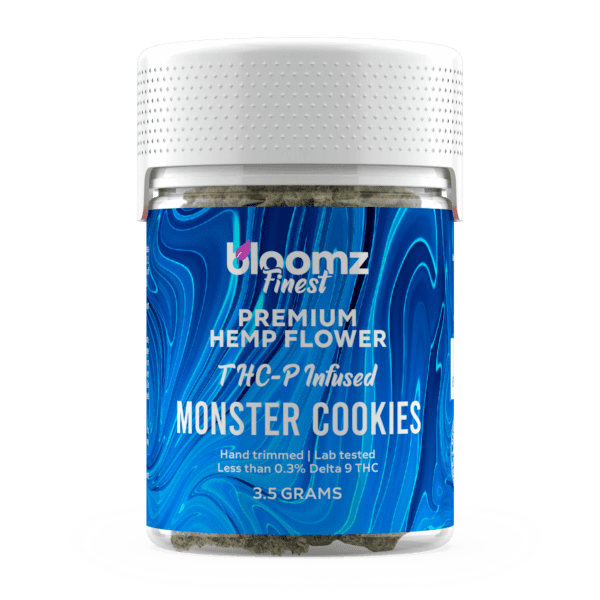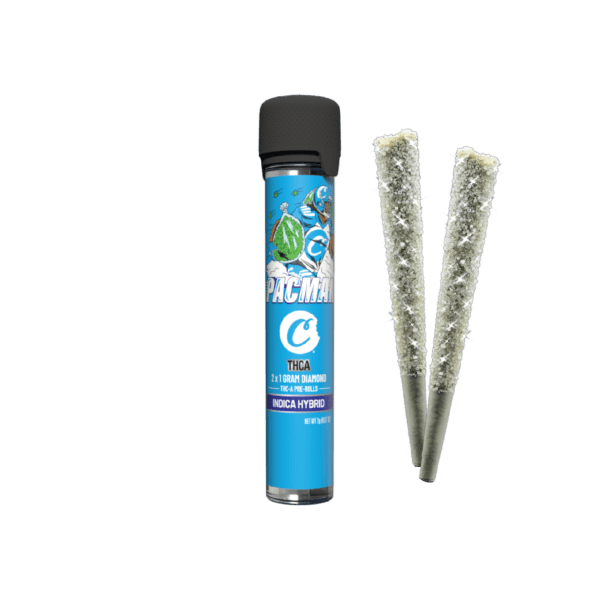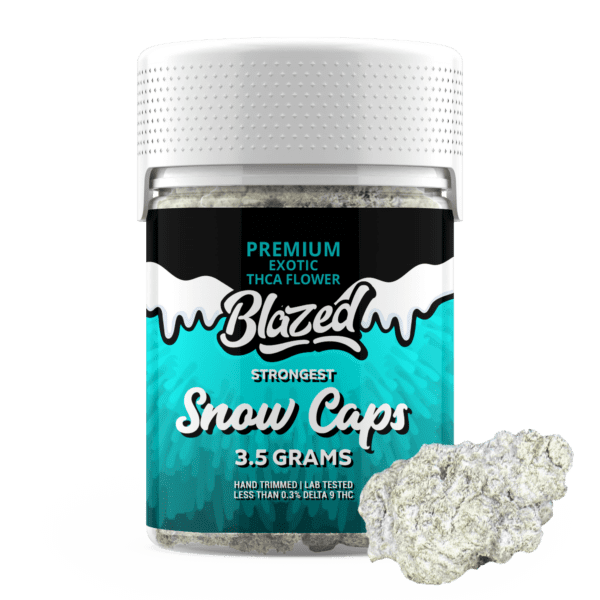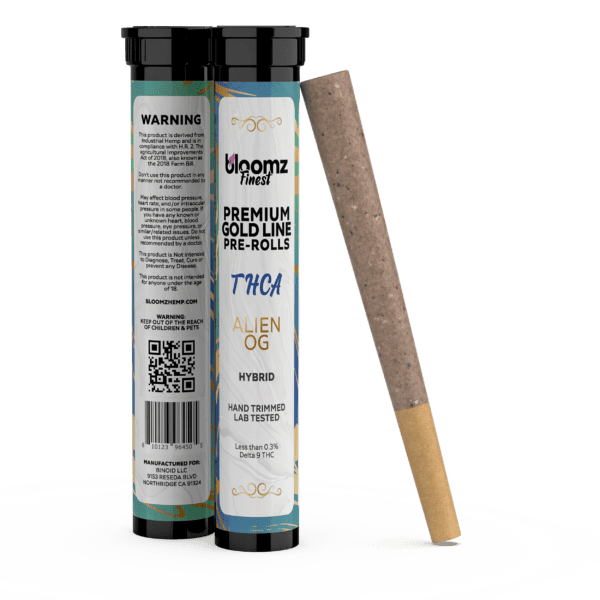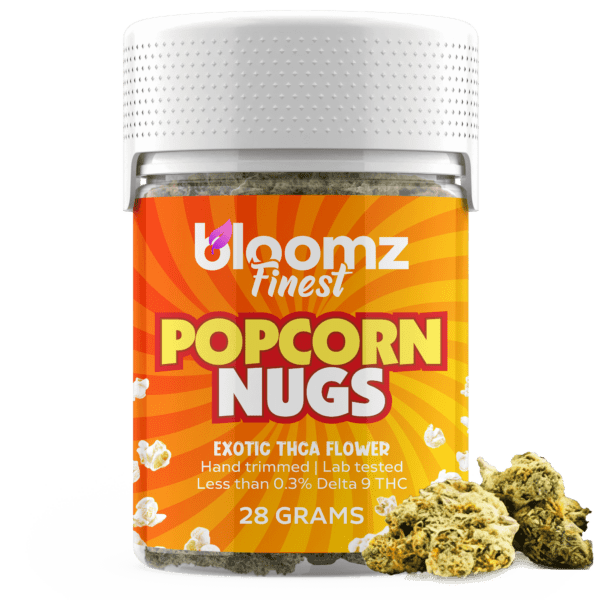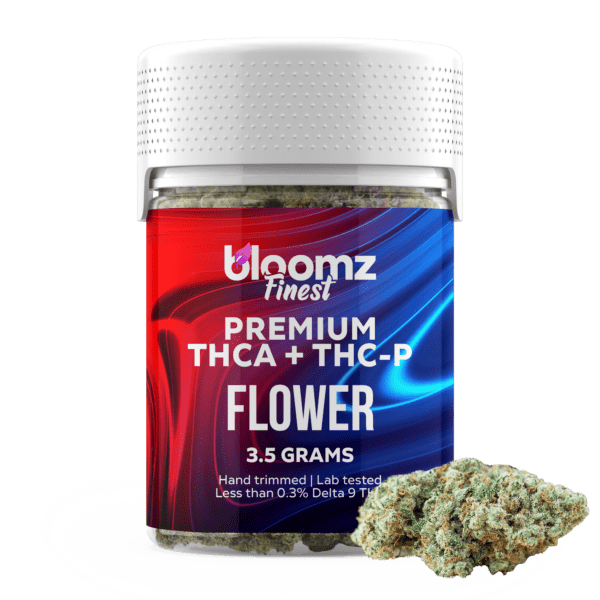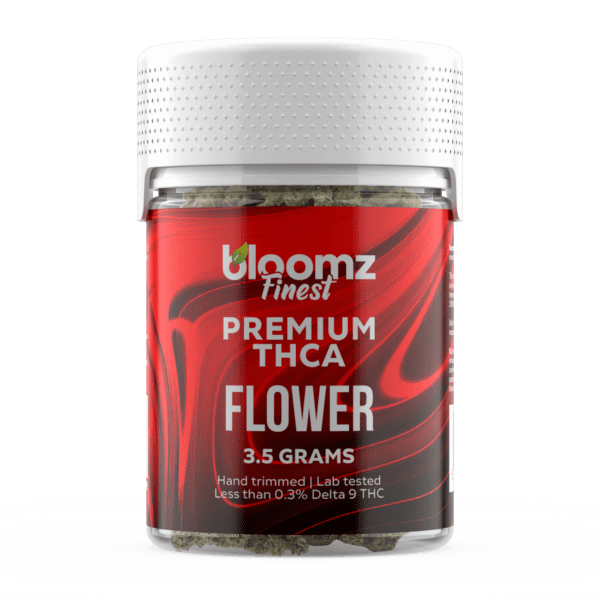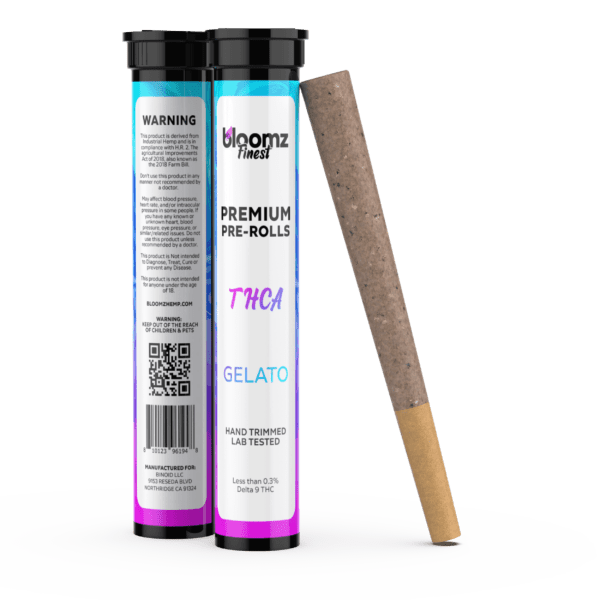The quest for personal wellness often leads us down paths brimming with natural wonders, from verdant fields to meticulously cultivated gardens. In this ever-expanding landscape of botanical solutions, two prominent categories frequently emerge, each with its own rich history, unique properties, and dedicated following. On one side, we have the complex and fascinating world of the cannabis plant, specifically focusing on the raw, unaltered beauty of THCA flower. On the other stands the vast and ancient apothecary of traditional herbs, a collection of roots, leaves, and flowers that have been intertwined with human culture for millennia.
Navigating the nuances between these powerful botanical allies can feel like exploring two distinct yet overlapping universes of experience. This journey isn’t simply about choosing one over the other; it’s about understanding the fundamental character, the intricate science, and the diverse applications that define each. It is an exploration into how nature provides a spectrum of options, each tailored to different preferences, lifestyles, and wellness philosophies, inviting us to become more informed curators of our own well-being.
To Buy THCA Flower Click Here
Recommended products
-
THCA Flower – Indoor Exotics – Gold Line
$37.99$69.99 -
THCA Flower – Platinum Line
$49.99$79.99 -
THCA Flower – Mystery Reserve
$41.99$79.99 -
THCA Smalls
$149.99$256.99
Why It’s Important to Breakdown the Matchup of THCA Flower vs. Herbs for Medicinal and Wellness
In today’s burgeoning wellness market, the sheer volume of choices can be both empowering and overwhelming. Making a clear and detailed comparison between THCA flower and traditional herbs is not just an academic exercise; it is an essential tool for consumer education and empowerment. By dissecting their origins, chemical compositions, legal frameworks, and methods of use, we create a roadmap that helps individuals navigate their options with confidence and clarity.
This breakdown demystifies complex topics, moving beyond marketing buzzwords to provide a substantive understanding of what each contender truly offers. It allows for a more intentional approach to wellness, where decisions are based on knowledge rather than speculation, ensuring that the chosen path aligns perfectly with personal goals and comfort levels. Ultimately, this detailed matchup fosters a more sophisticated and responsible conversation around plant-based wellness, celebrating the unique strengths of each while respecting their profound differences.
A thorough comparison illuminates the critical factor of mechanism of action. THCA flower‘s potential is intrinsically linked to the human endocannabinoid system (ECS) – a complex network of receptors that plays a role in regulating various bodily functions. Its effects are largely contingent on a process of transformation, namely decarboxylation, which fundamentally alters its chemical structure. Conversely, traditional herbs interact with the body through a multitude of different pathways. Compounds like alkaloids, flavonoids, and terpenes found in herbs such as lavender or chamomile engage with various other receptor systems, offering a different mode of interaction altogether. Understanding this fundamental divergence in how they work within the body is crucial for setting realistic expectations and appreciating the unique character of the experience each provides.
Furthermore, the cultural and legal contexts surrounding THCA flower and traditional herbs are vastly different and carry significant weight. Traditional herbs are, for the most part, deeply integrated into global cultures and are widely accessible and accepted, regulated typically as dietary supplements or food items. THCA flower, despite its growing acceptance, operates within a much more complex and evolving legal patchwork, born from the broader history of cannabis regulation. Examining these legal landscapes is not just a matter of compliance but also speaks to the societal perceptions and historical baggage associated with each. This context shapes accessibility, product quality, and the overall user experience, making it an indispensable part of a comprehensive comparison for any discerning individual.
Finally, breaking down this matchup is vital for understanding the diversity of form and application. THCA flower is primarily consumed through inhalation or by being converted into edibles, methods that offer distinct onset times and durations of effects. The world of herbs, in contrast, is exceptionally versatile, available in tinctures, teas, capsules, powders, and topical applications, each providing a different way to incorporate them into a daily routine. This variety speaks to different lifestyles and preferences. A person seeking a quick, ritualistic experience might gravitate towards one method, while someone looking for a slow, sustained integration into their diet might prefer another. A detailed analysis of these practical differences empowers individuals to choose not just the substance but the method that best suits their life.
Contender #1: THCA Flower
Our first contender steps into the ring with a certain mystique, representing a modern understanding of a plant that has been known for centuries. THCA flower is a specific and nuanced product from the cannabis plant, one that has garnered immense attention due to its unique chemical profile and its relationship with the more widely known Delta 9 THC. It is, in essence, the raw, unheated form of cannabis flower, containing high concentrations of Tetrahydrocannabinolic acid (THCA).
This product isn’t about the immediate, intense psychoactive experience often associated with its famous counterpart. Instead, it offers a different kind of potential, one that is unlocked through a specific and intentional process of transformation, making it a fascinating subject for those interested in the intricate chemistry of cannabinoids. The appeal of THCA flower lies in its purity and its direct connection to the natural state of the plant, offering a glimpse into the cannabis matrix before it is altered by heat.
So, what exactly is THCA? Tetrahydrocannabinolic acid is one of the most abundant non-psychoactive cannabinoids found in fresh, undried cannabis, and it’s the acidic precursor to Delta 9 THC. In the living plant, cannabinoids are synthesized and stored in their acidic forms, such as THCA and CBDA (Cannabidiolic acid). THCA is characterized by an additional carboxyl group in its molecular structure, which is the key feature that distinguishes it from Delta 9 THC. This seemingly small molecular difference is profoundly significant, as it prevents THCA from binding effectively with the CB1 receptors in the brain, the interaction responsible for the euphoric and psychoactive effects associated with Delta 9 THC. Therefore, in its raw state, consuming THCA will not produce that classic “high.” Its potential is latent, a stored form of energy waiting for a catalyst to convert it into its more famous, psychoactive derivative. The presence and concentration of THCA are often seen as indicators of the flower’s potential potency once it is eventually heated.
THCA flower is simply the bud of the cannabis plant that has been cultivated, harvested, and cured in a way that preserves the maximum concentration of Tetrahydrocannabinolic acid. Unlike marijuana that is sold in state-licensed dispensaries for its immediate Delta 9 THC content, THCA flower is legally defined by its very low concentration of Delta 9 THC (typically below 0.3% by dry weight), which keeps it compliant with federal law under the 2018 Farm Bill. The production process is meticulous and focuses on preventing the natural degradation and conversion of THCA into Delta 9 THC, which can occur over time with exposure to heat, light, and oxygen.
Recommended products
The goal is to deliver a product that is rich in potential but remains non-psychoactive until the consumer decides to activate it. The production of high-quality THCA flower follows several critical steps:
Strain Selection: Cultivators begin by selecting cannabis genetics known to produce high levels of THCA. These are not hemp strains in the traditional sense (which are bred for CBD or fiber) but are often identical to the high-potency marijuana strains found in dispensaries, simply harvested and tested toensure they remain within the legal Delta 9 THC limit.
Cultivation: The plants are grown with careful attention to environmental factors like light, humidity, and nutrients to maximize cannabinoid and terpene production. Growing conditions, whether indoors or outdoors, are controlled to protect the delicate trichomes on the flower, which are the resin glands that produce and store THCA.
Harvesting: The timing of the harvest is crucial. Growers harvest the plants at their peak maturity to ensure the highest possible THCA content before it has a chance to naturally degrade. The plants are carefully cut and handled to minimize any damage to the flowers and trichomes.
Drying and Curing: This is arguably the most critical stage for preserving THCA. The flowers are slowly dried in a dark, climate-controlled environment over a period of days to weeks. After drying, they are placed in airtight containers for a process called curing. Curing can last for several weeks or months and allows for the breakdown of sugars and chlorophyll while preserving the cannabinoids and terpenes, resulting in a smoother, more flavorful final product and preventing THCA from converting prematurely.
Testing and Compliance: Throughout the process, and especially before packaging, samples of the flower are sent to third-party laboratories. These labs test for cannabinoid potency, ensuring the Delta 9 THC level is at or below the 0.3% federal threshold, and also test for terpenes and potential contaminants like pesticides or heavy metals.
The market for THCA flower has diversified significantly, offering consumers a wide array of options tailored to different preferences for quality, format, and experience. These different types and categories reflect variations in cultivation methods, bud size, processing techniques, and overall potency and aesthetic appeal. Understanding these distinctions can help users make more informed choices that align with their expectations for flavor, aroma, and effect. From meticulously grown indoor buds to convenient, ready-to-use pre-rolls, each category presents a unique way to experience what THCA flower has to offer:
Indoor THCA Flower: This category represents the pinnacle of controlled cultivation. Grown entirely indoors under artificial lighting and in a highly regulated environment, these plants are shielded from the unpredictability of nature. This allows growers to fine-tune every variable, from the light spectrum and nutrient delivery to humidity and CO2 levels, resulting in a product of exceptional consistency, potency, and visual appeal. Indoor flower is often characterized by dense, perfectly formed buds, a vibrant color palette, and a thick, frosty coating of trichomes, which are rich in THCA and terpenes. The aroma and flavor profiles are typically more pronounced and complex due to the preservation of volatile terpenes in the controlled environment.
Outdoor THCA Flower: Cultivated under the natural sun and in the open air, outdoor THCA flower offers a more traditional and terroir-driven experience. The final product is influenced by the unique environmental factors of its growing location, including the soil composition, local climate, and sunlight intensity, much like wine grapes. Outdoor buds may be less cosmetically perfect than their indoor counterparts, sometimes appearing darker or more varied in structure, but they are often prized for their robust and earthy flavor profiles. This method is more sustainable and less energy-intensive, which can appeal to environmentally conscious consumers.
THCA Smalls: As the name suggests, “smalls” are smaller-sized buds from the cannabis plant. These are not of lower quality in terms of their chemical composition; they simply did not grow to the size of the larger, premium “cola” buds, often because they were located lower on the plant and received less direct light. THCA smalls offer a more budget-friendly option for consumers who are more interested in the flower’s effects and flavor rather than its bag appeal. They provide the same potency and terpene profile as the larger nugs from the same plant, making them an excellent value proposition.
THCA Nugs: This is the standard form of THCA flower, consisting of the trimmed and cured buds, or “nugs,” from the cannabis plant. They represent the primary product and are what most people picture when they think of cannabis flower. The quality can range significantly based on the cultivation method (indoor vs. outdoor), the specific strain, and the care taken during the trimming and curing process. Nugs are versatile, suitable for grinding up to be used in vaporizers, pipes, or for rolling into joints.
THCA Snowballs/Snow Caps: This is a more specialized and potent type of THCA product. A THCA snowball starts with a high-quality THCA flower bud that is then coated in a broad-spectrum CBD oil or similar sticky agent. After being coated, the bud is rolled in pure THCA isolate, which is a crystalline powder that is nearly 100% pure THCA. The result is a bud that looks as though it has been dusted in snow, with a dramatically enhanced THCA concentration that delivers a much more powerful experience upon decarboxylation.
THCA Moonrocks: Similar in concept to snowballs, moonrocks are another high-potency creation.The process involves taking a premium THCA nug, dipping it or coating it in a heated cannabis concentrate or distillate (which itself is rich in cannabinoids), and then rolling it in kief. Kief is the collection of resinous trichomes that have been sifted from the cannabis flower. This triple-layered product is incredibly dense and potent, offering a slow burn and a profoundly intense experience that is significantly stronger than flower alone.
THCA Pre-Rolls, Blunts & Joints: For convenience and ease of use, many consumers turn to pre-packaged options. THCA pre-rolls consist of ground THCA flower that has been expertly rolled into a joint with a filter tip, ready for immediate consumption. THCA joints are typically rolled in traditional papers made from hemp, rice, or flax. THCA blunts offer a different experience, using a wrap made from tobacco leaves or, more commonly in the modern market, hemp-based wraps that mimic the slow burn and distinct flavor of a classic blunt without the nicotine. These products eliminate the need for grinding and rolling, making them ideal for social settings or for those who prefer not to prepare the flower themselves.
Exotic THCA Flower: The term “exotic” in the cannabis world generally refers to strains that are rare, new, or have particularly unique and desirable characteristics. This could be an unusual color profile (like deep purples and bright pinks), a remarkably complex and potent aroma (with notes of candy, baked goods, or tropical fruit), or an exceptionally high cannabinoid and terpene content. Exotic THCA flower is a premium category for connoisseurs seeking a novel and high-end experience.
AA, AAA, AAAA Exotic THCA Flower: This grading system, often referred to as the “A-system,” is an informal industry standard used to classify the quality of cannabis flower, including exotic strains. While not officially regulated, it provides a general guideline for consumers.
AA (Dub): This is considered mid-grade flower. It may be less dense, have a less potent aroma, or be slightly less visually appealing than higher grades. It’s a functional and often affordable option but lacks the premium characteristics of the top tiers.
AAA (Trip): This is the standard for high-quality cannabis. AAA-grade flower will have well-formed, dense buds with a good trichome coating, a strong and pleasant aroma, and a smooth burn. Most reputable brands offer flower that meets at least this level of quality.
AAAA (Quads): This represents the highest echelon of cannabis flower. AAAA-grade flower is near-perfect in every aspect. The buds are exceptionally dense, perfectly trimmed, and caked in a thick layer of frosty trichomes. The aroma is extremely pungent and complex, the flavor is rich and pronounced, and the visual appeal is striking. This is connoisseur-grade cannabis that commands a premium price.
The effects and experience derived from THCA flower are heavily influenced by the specific strain that is chosen. Cannabis strains are generally categorized into three main groups: Indica, Sativa, and Hybrid. These classifications have traditionally been used to predict the type of experience a user might have, although modern science suggests that the unique combination of cannabinoids and terpenes (the entourage effect) is a more accurate determinant. Nonetheless, these categories remain a useful and widely understood shorthand for consumers navigating their options:
Indica: Traditionally, Indica strains are associated with more relaxing and calming effects on the body. Originating from the Hindu Kush mountains, these plants are typically shorter and bushier with broad leaves. Their terpene profiles often include high levels of myrcene, which is known for its earthy, musky, and sometimes fruity notes. When THCA from an Indica-dominant strain is decarboxylated and consumed, users often report a sense of profound physical relaxation, a “couch-lock” feeling, and an overall sense of tranquility and ease. These strains are often preferred for evening use or for moments when the goal is to unwind and decompress. Popular examples include strains like Granddaddy Purple, Northern Lights, and Bubba Kush.
Sativa: In contrast, Sativa strains are reputed to provide more uplifting, energetic, and cerebral experiences. These plants evolved in equatorial regions and are characterized by their tall, lanky stature and narrow leaves. Their terpene profiles frequently feature limonene (citrusy) and pinene (pine-like), which are associated with more invigorating aromas. Upon decarboxylation, the THCA from Sativa-dominant strains is often reported to inspire creativity, promote focus, and produce a sense of euphoria and social energy. These strains are a popular choice for daytime activities, creative projects, or social gatherings. Well-known Sativa strains include Sour Diesel, Jack Herer, and Green Crack.
Hybrid: As their name implies, Hybrid strains are bred from a combination of Indica and Sativa parents. They represent the largest category of strains on the market and are designed to offer a more balanced experience, capturing desirable traits from both sides of the cannabis spectrum. Hybrids can be Sativa-dominant, Indica-dominant, or a true 50/50 balance. The effects can vary widely, from a gentle cerebral uplift paired with comfortable body relaxation to more nuanced experiences that evolve over time. Breeders create hybrids to target specific combinations of flavor and effect, resulting in an almost endless variety of options. Popular hybrid strains include Blue Dream, GG4 (formerly Gorilla Glue #4), and Girl Scout Cookies (GSC).
The legality of THCA flower in the United States is a subject of considerable complexity and is rooted in the language of the 2018 Agriculture Improvement Act, more commonly known as the Farm Bill. This landmark piece of legislation federally legalized hemp by defining it as the cannabis plant, Cannabis sativa L., with a Delta 9 THC concentration of not more than 0.3 percent on a dry weight basis. This specific definition is the key to the legal status of THCA flower. Since THCA is not Delta 9 THC, a flower that is rich in THCA but contains less than 0.3% Delta 9 THC meets the federal definition of legal hemp. This creates a legal pathway for the cultivation, sale, and possession of THCA flower across the country, as long as it remains compliant with that specific Delta 9 THC threshold at the time of testing.
However, the legal landscape is not uniform across all states. Some states have enacted their own laws that either explicitly ban or regulate THCA, sometimes using a “total THC” calculation (which combines the Delta 9 THC level with the potential THCA that could be converted) to determine legality. Therefore, while THCA flower is federally permissible under the Farm Bill, its legal status can vary at the state and even local level, making it imperative for consumers to be aware of the specific regulations in their own jurisdiction.
The versatility of THCA flower allows for several different purposes and methods of consumption, each offering a unique experience based on how the THCA is activated through decarboxylation. The chosen method impacts the onset time, duration, and overall character of the effects, allowing users to tailor their experience to their specific needs and preferences. Whether one prefers the immediate effects of inhalation or the prolonged experience from ingestion, THCA flower provides a raw material that can be adapted to various wellness routines.
Vaping (using a portable or desktop vaporizer): Vaping is a popular modern method for consuming THCA flower that involves heating the ground material to a temperature high enough to vaporize the cannabinoids and terpenes without causing combustion. This process effectively decarboxylates the THCA into Delta 9 THC on demand. The user inhales the resulting vapor, not smoke. Many people prefer vaping because it is considered a smoother and cleaner experience than smoking, as it avoids the creation of tar and other harmful byproducts of burning plant matter. It also allows for a greater appreciation of the flower’s nuanced terpene profile, resulting in a more flavorful experience. The effects of vaping are felt almost instantly, typically within minutes, and offer precise control over the experience.
Smoking: This is the most traditional and straightforward method of consumption. It involves grinding the THCA flower and rolling it into a joint or blunt, or packing it into the bowl of a pipe or bong. When the flower is lit, the high temperature of the flame causes immediate decarboxylation, converting THCA into Delta 9 THC, which is then inhaled with the smoke. Smoking provides a rapid onset of effects, similar to vaping, making it effective for those seeking an immediate experience. The ritual of grinding the flower and rolling a joint is also a cherished part of the process for many long-time enthusiasts.
Cooking/Baking: THCA flower can also be used to create edibles, but it requires a crucial preliminary step. To be effective in an edible form, the THCA must first be decarboxylated. This is typically done by grinding the flower and baking it in an oven at a low temperature (around 220-245°F or 105-120°C) for 30-45 minutes. This process converts the THCA into Delta 9 THC. The resulting “activated” flower can then be infused into a fat, such as butter or oil, which can then be used in any recipe. When consumed in an edible, the Delta 9 THC is processed by the liver, which converts it into a more potent metabolite called 11-hydroxy-THC. This results in an experience that has a much slower onset (typically 45 minutes to 2 hours), a longer duration (lasting several hours), and is often perceived as much more intense and full-bodied compared to inhalation.
When THCA flower is heated, the resulting Delta 9 THC produces a range of effects that can vary significantly based on the strain, the individual’s physiology, the dosage, and the setting. The primary experience is often characterized by a sense of euphoria, a noticeable shift in perception that can make colors seem more vivid, music more profound, and food more flavorful. Many users report a lifting of their mood, often accompanied by feelings of happiness, contentment, and sometimes bouts of creativity or introspection. On a physical level, the experience can bring about a deep sense of relaxation and bodily comfort, a feeling of lightness or a pleasant weightiness that can help one unwind.
Cognitive effects can include an altered perception of time, an increase in abstract or creative thinking, and sometimes a tendency to find humor in the mundane. The specific character of these effects is heavily guided by the strain’s terpene profile; a Sativa might lead to more energetic and cerebral feelings, while an Indica is more likely to produce a profoundly chilled out and tranquil state.
Pros & Cons
Like any botanical product, engaging with THCA flower presents a unique set of advantages and potential drawbacks. Evaluating these pros and cons allows for a more balanced and realistic understanding of what this particular contender offers. This consideration moves beyond the initial fascination with its unique properties and into the practical realities of its use, helping individuals determine if it is a suitable choice for their personal wellness journey.
Pros:
One of the most significant advantages of THCA flower is the high degree of control it offers the user over their experience. Because THCA is non-psychoactive in its raw state, the consumer becomes the catalyst for its transformation. This means you can decide precisely when and how to activate the compound through decarboxylation, whether through the immediate process of vaping or the more deliberate act of preparing edibles. This element of choice and intention is empowering and allows for a more personalized and predictable wellness routine.
The rapid onset of effects associated with inhalation methods like smoking or vaping is another major benefit. When seeking a quick shift in mood or a swift transition into a state of relaxation, the ability to feel the effects within minutes is incredibly valuable. This immediacy allows for easier titration, as users can take a small amount, wait a few minutes to gauge the effects, and then decide if they wish to consume more, reducing the risk of overconsumption.
THCA flower provides access to the “entourage effect,” a theory suggesting that the various compounds in the cannabis plant work synergistically to produce a more profound and nuanced experience. The flower contains not just THCA but also a full spectrum of other cannabinoids (like CBD, CBG, and CBC), terpenes, and flavonoids. This complex interplay is believed to create a more holistic and well-rounded effect than consuming isolated cannabinoids alone.
The sheer variety available in the THCA flower market is a considerable pro. With a vast selection of Indica, Sativa, and Hybrid strains, consumers can explore a wide range of aromatic profiles, flavors, and potential effects. This diversity allows individuals to find strains that specifically align with their desired outcomes, whether they are seeking to inspire creativity, encourage social interaction, or promote a deeply restful state.
From a legal standpoint, the current federal status of THCA flower under the 2018 Farm Bill makes it significantly more accessible to a broader audience across the United States than state-legal marijuana. This allows individuals in regions without adult-use cannabis programs to legally purchase and explore a high-potency cannabinoid product online and from various retailers. This accessibility has opened up the world of cannabis to many who were previously excluded.
For many users, the ritual of preparing and consuming flower is an integral part of the experience. The tactile process of handling the buds, the aromatic release when grinding them, and the methodical act of rolling a joint or packing a bowl can be a mindful and enjoyable practice in itself. This ritualistic aspect can enhance the overall sense of well-being and create a more intentional and centered experience.
The flavor and aroma of high-quality THCA flower are exceptionally complex and can be a major source of enjoyment for connoisseurs. The intricate terpene profiles can produce notes ranging from citrus and pine to berry, lavender, and diesel. Vaping, in particular, allows these delicate flavors to be experienced without the harshness of smoke, providing a rich sensory experience that is a significant part of the product’s appeal.
Compared to many highly processed cannabis products like distillates or isolates, THCA flower is a relatively unprocessed, whole-plant product. It is simply the cured flower of the plant, preserved in its natural state. For individuals who prefer to use products that are closer to their original botanical source, THCA flower offers an appealingly straightforward and unadulterated option.
The ability to use THCA flower to create homemade edibles offers another layer of versatility and control. By decarboxylating the flower and infusing it into butters or oils, users can precisely control the potency and ingredients of their own edibles. This DIY approach can be more cost-effective than purchasing pre-made edibles and allows for complete dietary customization, which is ideal for those with allergies or specific preferences.
The growing market for THCA flower has led to increased competition and a greater emphasis on quality and transparency. Reputable vendors provide comprehensive third-party lab reports (Certificates of Analysis) that detail the product’s cannabinoid and terpene content, while also verifying its purity and safety. This level of transparency empowers consumers to make educated purchasing decisions based on verifiable data.
Cons:
The most prominent drawback of THCA flower is its complex and often confusing legal status. While federally permissible under the Farm Bill’s narrow definition of hemp, its legality can be challenged or outright prohibited by state laws that use a “total THC” standard for compliance. This creates a gray area that can be difficult for consumers to navigate, and the legal landscape is subject to change, posing a risk for both sellers and buyers.
The act of heating THCA flower, whether through smoking or vaping, is necessary to experience its primary effects, but the inhalation of any substance carries potential respiratory risks. Smoking involves combustion, which creates tar and other carcinogens that can be harsh on the lungs over time. While vaping is generally considered a less harmful alternative, the long-term effects of inhaling vaporized cannabinoids and terpenes are still being studied.
The aromatic nature of cannabis is a pro for many, but it is a significant con for those who require discretion. The smell of smoking or even vaping THCA flower is strong, pungent, and easily recognizable. This lack of discretion can be problematic for individuals living in shared spaces, apartments, or in situations where the distinct odor could cause social or professional complications.
While the psychoactive effects are the desired outcome for many, they can also be a significant drawback. The experience can sometimes be too intense, leading to feelings of discomfort, paranoia, or a sense of being overwhelmed, especially for new users or with high-potency strains. The cognitive impairment that accompanies the experience also means that activities requiring sharp focus and coordination, such as driving or operating machinery, are unsafe and must be avoided.
Contender #2: Herbs
Our second contender is not a single entity but a vast and venerable library of botanical knowledge, representing thousands of years of human experience with the natural world. Traditional herbs, in the context of wellness, are a global collection of plants whose roots, bark, leaves, flowers, and seeds have been used across countless cultures to support health and encourage a state of holistic balance. This is the enduring world of chamomile, ginseng, lavender, and turmeric—names that evoke a sense of grounding, tradition, and gentle, nurturing care.
Unlike the targeted, intense effect of a single semi-synthetic cannabinoid, the philosophy of herbalism is synergistic and multifaceted, relying on the complex interplay of a plant’s many natural compounds. Their timeless appeal is found in their deep historical roots, their incredible versatility in application, and their alignment with wellness paradigms that favor gradual, sustainable harmony over immediate, powerful alteration.
In the intricate lexicon of wellness, “herbs” are defined as plants or specific parts of plants that are valued and utilized for their aromatic, savory, or, most significantly, their therapeutic properties. This utilization is fundamentally rooted in the profound understanding that plants, in their own struggle for survival and procreation, synthesize an incredibly wide variety of chemical compounds for growth, defense against predators, and adaptation to their environment. A great many of these compounds can have fascinating and beneficial effects on human physiology when consumed. These active constituents are categorized into complex classes, including alkaloids, which are nitrogen-containing compounds that can have powerful effects; flavonoids, which often contribute to plant pigmentation and have antioxidant properties; terpenes, the aromatic compounds responsible for the distinct scents of plants like pine and lavender; glycosides, phenols, and many more.
The philosophy undergirding herbalism is inherently holistic, viewing the plant as a complete, synergistic entity whose combined compounds work together more effectively and with greater balance than any single isolated component—a principle that mirrors the “entourage effect” concept found in cannabis. The application of these herbs is not typically intended to produce a single, potent, acute effect, but rather to provide gentle, cumulative support, helping to nourish and fortify bodily systems while promoting a state of equilibrium and resilience over extended periods of time.
The history of using herbs for wellness is inextricably linked with the history of humanity itself. Our earliest ancestors were hunter-gatherers whose survival depended on an intimate knowledge of the plant kingdom. This empirical knowledge, passed down through generations, formed the basis of the first systems of medicine. As civilizations arose, this wisdom was recorded and refined. Ancient Egyptian medical texts, such as the Smith Papyrus, detail the use of medicinal plants. In India, the ancient system of Ayurveda developed a highly sophisticated pharmacopeia of thousands of herbs to balance the body’s elemental energies, a practice documented in texts that are still studied today.
In China, the principles of Traditional Chinese Medicine (TCM) were established, using intricate herbal formulas to harmonize the flow of vital energy, or Qi. The foundations of Western herbalism were laid by the ancient Greeks and Romans like Dioscorides, whose work became the authoritative medical text in Europe for over 1,500 years. This rich herbal knowledge was the sole form of medicine for most of human history and provided the original templates for many of our most important modern pharmaceutical drugs.
While the global apothecary contains tens of thousands of herbs, a select group has achieved worldwide recognition for their long history of use, their gentle nature, and the growing body of scientific research that supports their traditional applications. These herbs serve as excellent introductions to the world of botanical wellness:
Ashwagandha (Withania somnifera): As a cornerstone of Ayurvedic medicine, ashwagandha is a celebrated adaptogen, a class of herbs believed to enhance the body’s resilience to life’s daily challenges. The root of this small shrub is used to promote a sense of calm, support restful sleep, and encourage overall vitality. Its active compounds, withanolides, are thought to help balance the body’s physiological responses, fostering a state of equilibrium.
Chamomile (Matricaria recutita): These small, daisy-like flowers are perhaps the most famous relaxing herb in the Western world. For centuries, a warm cup of chamomile tea has been a beloved ritual to unwind and prepare for a peaceful night’s sleep. Its gentle, calming effects are largely attributed to a flavonoid called apigenin, which helps to soothe the nervous system and promote a sense of tranquility.
Lavender (Lavandula angustifolia): Known for its stunning purple flowers and an aroma that is synonymous with relaxation, lavender is a giant in the world of aromatherapy. Its scent, rich in the terpenes linalool and linalyl acetate, has been shown to create a serene and calming atmosphere. While often used externally as an essential oil, its flowers can also be used in teas and foods to impart a sense of peaceful well-being.
Ginger (Zingiber officinale): This pungent, spicy rhizome is a staple in both kitchens and traditional apothecaries around the world. Ginger is renowned for its warming properties and its ability to support healthy digestion and soothe an upset stomach. Its main active compound, gingerol, is a potent antioxidant and is responsible for its characteristic fiery flavor.
Mint (Mentha species, especially Peppermint): The refreshing and cooling sensation of peppermint makes it an instantly recognizable and beloved herb. Traditionally used to support both respiratory health and digestive comfort, its active compound, menthol, provides its signature crisp aroma and soothing properties. A cup of peppermint tea is a classic and effective way to freshen the senses and calm the digestive system after a meal.
Ginseng (Panax species): Considered a precious “king” of herbs in Traditional Chinese Medicine, the gingseng root is a powerful adaptogen used to support energy, stamina, and mental clarity. It is a slow-growing plant whose active compounds, ginsenosides, are believed to bolster the body’s vitality and life force (Qi). It is often used to combat feelings of fatigue and support cognitive performance.
Turmeric (Curcuma longa): The brilliant golden-orange rhizome of the turmeric plant is a culinary spice and a revered Ayurvedic herb. Its primary active ingredient, curcumin, is a powerful antioxidant that has been extensively studied for its ability to support a healthy inflammatory response in the body. To enhance its benefits, it is often consumed with black pepper, which contains piperine to increase absorption.
Ginkgo (Ginkgo biloba): The unique, fan-shaped leaves of the ancient ginkgo tree have been used for centuries in TCM to support brain health and circulation. Ginkgo is most famously associated with supporting cognitive functions like memory and focus. It is rich in unique compounds, including flavonoids and terpenoids, that are believed to help promote healthy blood flow, particularly to the brain.
The enduring relevance of herbs is due in large part to their incredible versatility. They can be prepared and integrated into one’s life in a multitude of forms, ensuring that there is a suitable method for every lifestyle, preference, and tradition. This adaptability allows the wisdom of herbalism to thrive in the modern world, from simple, ancient preparations to sophisticated contemporary products:
Powders: Dried herbs can be finely milled into powders, which are perfect for blending into smoothies, stirring into yogurt or oatmeal, or adding to recipes. This method allows for the consumption of the whole herb and offers easy, customizable dosing.
Edibles: The wellness industry has embraced functional foods, creating products like herbal gummies, infused chocolates, and snack bars. This makes taking herbs a delicious and convenient treat rather than a chore.
Tinctures: Tinctures are concentrated liquid extracts that offer potency and a long shelf life. A few drops of a tincture under the tongue or in a beverage can provide a rapid and precisely measured dose of the herb’s active compounds.
Capsules: For those who want maximum convenience and wish to avoid the often-strong taste of many herbs, capsules are the perfect solution. They provide a tasteless, pre-measured, and consistent dose every time.
Beverages: Brewing herbal tea is the most traditional and ritualistic method of consumption. The simple act of steeping herbs in hot water is a calming practice in itself. The modern market has also exploded with ready-to-drink herbal teas, tonics, and sparkling botanical waters.
Dietary Supplements: This broad category includes tablets and softgels that usually contain a standardized herbal extract, which is formulated to deliver a specific and guaranteed amount of a key active compound.
Pre-Workout Products: Many natural pre-workout supplements now use stimulating and adaptogenic herbs like rhodiola and ginseng to support energy and endurance as an alternative to synthetic ingredients.
Recommended products
A key feature of the modern natural products industry is the creation of synergistic formulas that combine herbs with specific vitamins, minerals, and amino acids. This approach is based on the scientific principle that these ingredients can work together to create an effect that is greater than the sum of its parts. For instance, a formula for joint support might combine the herb boswellia with glucosamine and chondroitin. A blend for mood support might pair the herb St. John’s Wort with B-vitamins and the amino acid 5-HTP. This allows for the creation of sophisticated, multi-action products that address wellness goals from multiple angles.
Another powerful trend in wellness is the combination of traditional herbs with functional mushrooms. Fungi like Reishi, Lion’s Mane, and Cordyceps have their own rich histories of use and contain unique bioactive compounds, such as beta-glucans, that are not found in plants. By blending the botanical and fungal kingdoms, formulators can create potent synergistic products. For example, the adaptogenic herb astragalus could be combined with a blend of immune-supportive mushrooms like Turkey Tail and Chaga. The cognitive-supporting Lion’s Mane mushroom could be paired with the herb ginkgo biloba for a comprehensive brain health formula.
The latest frontier in formulation is the combination of traditional herbs with cannabinoids derived from the hemp plant. This innovative approach unites the ancient wisdom of herbalism with the modern science of the endocannabinoid system (ECS). By pairing herbs with non-intoxicating cannabinoids like CBD, CBG, or CBN, or even compliant amounts of Delta 8 THC, HHC, or Delta 9 THC, formulators can create products with targeted and enhanced effects. For example, a relaxing blend might combine chamomile and lavender with CBD and CBN. A topical for physical comfort might blend the herb arnica with the cannabinoid CBG. This allows for a multi-system approach, where the herbs and cannabinoids work on different but complementary pathways in the body.
The overall effects of herbs are characterized by their gentle, subtle, and cumulative action. Unlike the immediate and powerful psychoactive experience delivered by HHC flower, herbs work quietly in the background to support and nourish the body’s own systems. The goal is not to induce a dramatic shift in consciousness but to foster a state of balance and resilience over time. The benefits of an adaptogen are not felt as a sudden “kick,” but as a gradual realization over weeks that one is feeling more centered and energetic. The effects of a digestive herb like peppermint are a gentle and immediate soothing of the stomach. The herbal path is a marathon, not a sprint, focused on building a strong and resilient foundation for lasting well-being.
Pros & Cons
The ancient and gentle path of herbalism offers a wealth of benefits for those seeking to support their well-being, but it is not without its limitations. A balanced and realistic understanding of its distinct advantages and potential drawbacks is key to successfully incorporating these botanical allies into one’s life. This allows for the setting of proper expectations and ensures that the herbal approach is the right fit for an individual’s specific goals and lifestyle.
Pros:
The non-psychoactive nature of almost all wellness herbs is their most significant advantage. This allows them to be used safely at any time of day without fear of intoxication or impairment. They can be part of a morning routine before work or an evening ritual before bed without disrupting one’s clarity, focus, or ability to function.
Herbs are broadly legal and socially accepted worldwide. Regulated as foods or supplements, they are easily accessible in mainstream stores and online without legal risk or social stigma. This low barrier to entry makes herbalism an incredibly approachable form of natural wellness for nearly everyone.
The sheer biodiversity of the plant kingdom provides an incredible array of herbal options. This allows for a highly personalized approach to wellness, where individuals can choose specific herbs or formulas to support their unique needs, whether for digestion, sleep, energy, or mood.
The effects of herbs are typically gentle and work in harmony with the body’s own homeostatic mechanisms. They act as supportive tonics rather than powerful agents of change, which is ideal for those seeking to build sustainable, long-term health and resilience.
Engaging with herbalism is a way to connect with millennia of human tradition and wisdom. The simple ritual of preparing and drinking herbal tea can be a mindful and grounding practice, adding a layer of historical and cultural richness to one’s wellness routine.
The versatility of herbal preparations is a major pro. With options ranging from teas and tinctures to capsules and gummies, there is a format to suit any preference or lifestyle. This adaptability makes it easy to maintain a consistent herbal regimen.
Many fundamental and effective herbs are quite affordable, especially when purchased as loose, dried botanicals. This makes the foundational aspects of herbal wellness accessible to people from all economic backgrounds, democratizing natural health.
The sensory aspects of herbs—their aromas, tastes, and colors—are a significant part of their benefit. The practice of aromatherapy is based on the mood-lifting effects of plant scents, and the enjoyment of a flavorful herbal tea adds a pleasurable dimension to the experience.
A growing body of scientific research is continually exploring and validating the traditional uses of many herbs. This evidence-based approach gives consumers more confidence in the efficacy and safety of herbal products and deepens our understanding of how they work.
The modern wellness market excels at creating synergistic formulas that combine herbs with other beneficial ingredients like vitamins, mushrooms, and cannabinoids. These sophisticated blends can offer more targeted and comprehensive support than a single herb alone.
Cons:
The dietary supplement industry, which governs most herbal products, is not as strictly regulated as the pharmaceutical industry. This can lead to inconsistencies in product quality, purity, and potency. Consumers must take on the responsibility of researching brands and verifying third-party lab tests.
The gentle, cumulative nature of herbs requires patience and consistency. The benefits are often subtle and may take weeks or even months of daily use to become noticeable. This can be a drawback for those seeking quick and dramatic results.
Even though they are natural, herbs are biochemically active and can cause side effects, allergic reactions, or interact negatively with prescription medications. It is crucial to consult with a healthcare professional before starting an herbal regimen, especially for those with pre-existing health conditions or who are taking other medications.
The flavor of many medicinally potent herbs can be intensely bitter, earthy, or otherwise challenging to the palate. This can be a significant barrier to compliance for some individuals, limiting their options to capsules or other forms that mask the taste.
How to Go About Choosing Which Option
Embarking on a journey with either THCA flower or traditional herbs requires a thoughtful consideration of your personal wellness philosophy, lifestyle, and desired outcomes. This is not a decision about which option is objectively “better,” but rather which is a better fit for you as an individual. The right choice hinges on a clear understanding of your goals: are you seeking a profound, immediate shift in your state of being, or are you looking for gentle, long-term support that integrates seamlessly into your daily life? Reflecting on your comfort level with psychoactive effects, your need for discretion, and your patience for results will guide you toward the botanical path that aligns most harmoniously with your needs.
To simplify this decision-making process, consider the key attributes of each contender. THCA flower, once heated, is defined by its potent, fast-acting, and psychoactive effects, making it suitable for acute, in-the-moment use. It is ideal for recreational pursuits, deep relaxation, or creative endeavors where a significant alteration of consciousness is the intended goal. The experience is intense and immediate but requires navigating a more complex legal landscape and presents challenges for discretion.
On the other hand, the world of herbs offers a non-psychoactive, subtle, and cumulative approach. This path is better suited for foundational wellness and daily support, where the goal is to gently balance and nourish the body’s systems over time. Herbs are legally straightforward, socially accepted, and can be used anytime without cognitive impairment. The trade-off is that their effects are far less immediate and dramatic, requiring consistency and patience to realize their full potential.
|
Feature |
THCA Flower |
Traditional Herbs |
|---|---|---|
|
Primary Effect |
Potent, psychoactive (when heated) |
Non-psychoactive, balancing |
|
Onset Time |
Very fast (minutes) via inhalation |
Slow & cumulative (days to weeks) |
|
Primary Use Case |
Acute, recreational, intense relaxation |
Daily, foundational, long-term support |
|
Legality |
Legally complex, varies by state |
Widely legal and accessible |
|
Discretion |
Low (strong, recognizable odor) |
High (no odor, discreet forms) |
|
Cognitive Impact |
Significant impairment, psychoactive |
None, can be used anytime |
|
Regulation |
Varies; hemp-derived product |
Regulated as dietary supplements |
|
Variety |
Many strains (Indica, Sativa, Hybrid) |
Thousands of different plant species |
|
Consumption Ritual |
Often ritualistic (rolling, packing) |
Can be ritualistic (tea) or convenient |
|
Best For |
Users seeking immediate, powerful effects |
Users seeking gentle, sustained wellness |
Ultimately, choosing between THCA flower and traditional plants may not be an either/or proposition. Many people find that these two worlds can coexist beautifully within a comprehensive wellness toolkit. One might use traditional herbs as a daily foundation for balance and resilience, while reserving THCA flower for specific occasions when a more profound and immediate shift is desired. The key is to approach both with respect, knowledge, and a clear intention, allowing these remarkable gifts from the plant kingdom to support your journey in the way that serves you best.
Charting Your Own Botanical Course
The exploration of nature’s vast offerings is a deeply personal endeavor, a dialogue between your own body and the botanical world. As you stand at this crossroads, with the intricate potential of THCA flower on one path and the ancient, steady wisdom of traditional herbs on the other, the most important compass you hold is your own self-awareness.
Your choice is not a final destination but the next step on an ever-evolving wellness journey. Trust in the process of learning and listening to your own experience, for that is where true wisdom is found. By embracing an informed and intentional approach, you empower yourself to cultivate a life rich with the balance, vitality, and harmony you seek, one leaf and one flower at a time.

